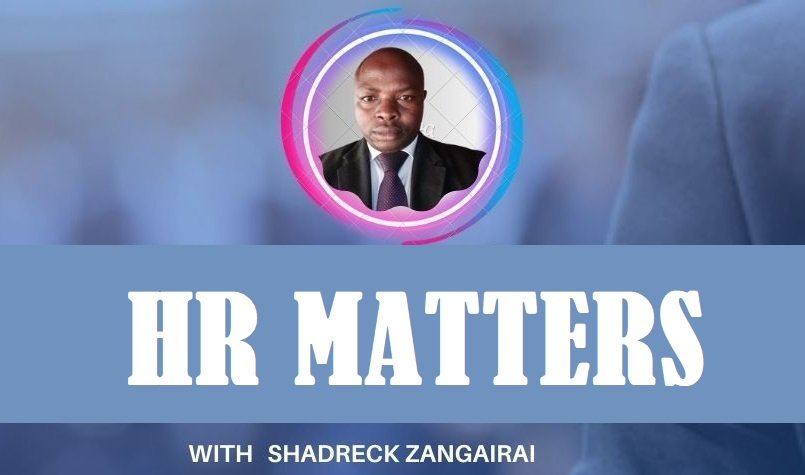By Shadreck Zangairai
It is an undeniable fact that we are living in the era which is driven by the adoption of new technologies at an exponential rate. Some call this era the fourth industrial revolution. Analytics, artificial intelligence (AI), cognitive technologies, and the internet of things (IoT) enable a new fusion between the digital and the physical worlds, creating a more holistic, interconnected digital enterprise. As noted by Deloitte in 2018, the change is not only global and technological, but also social and economic. This article will focus on how the demand for workforce skills will change with automation, how organisation can adapt to AI, and how to build the future workforce.
AI applications are designed to assist human beings think better. They enable performance of tasks that normally require human intelligence, such as visual perception, speech recognition, decision-making, and translation between languages. Automation will speed up the shift in required workforce skills that have been witnessed over the past years. The strongest growth in demand will be for technological skills, hence this will affect demand for basic digital skills as well as advanced technological skills such as programming. Demand for emotional and social skills such as leadership and managing others is expected to rise and the demand for higher cognitive skills will also grow moderately, for some skills, while it will also rise sharply for some other skills such as creativity.
However, other skill categories will be less in demand. Results from an MGI research on Automation, basic cognitive skills, which include basic data input and processing, is expected to decline by 15 percent while demand for physical and manual skills, which include general equipment operation, will also drop, by 14 percent. Skill shifts will play out differently across sectors. Healthcare, for example, will see a rising need for physical skills, even as demand for them declines in manufacturing and other sectors. Companies will need to make significant organizational changes at the same time as addressing these skill shifts so that they may remain competitive. A survey of more than 3,000 business leaders in seven countries by MGI highlights a new emphasis on continuous learning for workers and a shift to more cross-functional and team-based work. As tasks change, jobs also need to be redefined and companies will need to become more agile. Independent work will likely grow. Leadership and human resources will also need to adapt: many companies will lament that their executive team lacks sufficient knowledge to lead adoption of automation and artificial intelligence. The feeling will be that they lack the necessary skills for automation adoption which will hurt the organisation’s future financial performance.
As a result of this gap, competition for high-skill workers will increase, while displacement will be centred mainly on low-skill workers. High-skilled workers are most likely to be hired and retrained, leading to a raise in wages. Firms in the forefront of automation adoption expect to attract the talent they need, but slower adopters fear their options will be more limited.
The biggest question is how will demand for workforce skills change with automation. According to an MGI research on automation and AI in the workplace. The next 10 to 15 years will see the adoption of automation and artificial intelligence technologies transforming the workplace, as a result of people increasingly interacting with smarter machines. This interaction between technologies and human-machine will bring numerous benefits such as higher economic growth, improved corporate performance, and new prosperity. Furthermore, automation will replace aging workers which will also help solve societal problems as well. For instance, in the health fraternity, AI-powered machines are more adept than expert doctors at diagnosing some diseases from X-rays and MRIs. Trade agreements such as the Zimbabwe-China partnership has led to supply of such sophisticated machines such as those mentioned above.
What this means is that such technologies will also change the skills required of human workers. This is not a new phenomenon for skill shifts in the workforce because skill requirements have changed ever since the first Industrial Revolution reconfigured the role of machines and workers. There is a global complain from companies in trying to match the needed talent. Conversely, workers often complain about being underqualified or even overqualified for their jobs. Skill shortages and mismatches have negative implications for the economy and the labour market. Findings from the MGI researches (A future that works; Automation, employment and productivity; Jobs lost, jobs gained; Workforce transitions in a time of automation; Artificial intelligence; the next digital frontier) indicates that this can lead to increased labour costs, lost production due to unfilled vacancies, slower adoption of new technologies, and the implicit and explicit costs of higher unemployment rates. Interestingly, appropriate skills can boost economic growth.
To understand which skills will be needed more and those needed less, the MGI researches looked at the economy as a whole and in depth at five sectors: banking and insurance; energy and mining; healthcare; manufacturing; and retail. MGI’s hallmark micro-to-macro approach uses micro insights from industries and companies to inform broader macroeconomic trends. This assisted in identifying some of the key skill shifts in the future that will profoundly affect not just individual workers, but also companies and organizations.
To be continued next week….
Disclaimer: The information contained herein does not serve as alternative to legal advice. The author do not accept any liability for any damages or losses suffered as a result of actions taken based on information contained herein.
Shadreck Zangairai is a Human Resources Practitioner and for feedback, email: sh***********@gm***.com,
+263772939877/713068365







